Samsung Q80D is a very versatile television. It’s definitely a piece of equipment that can easily adapt to the needs of both gamers and those looking for a device for everyday viewing. As for the former - namely gamers. Thanks to HDMI 2.1 support, a 120 Hz refresh rate, and low input lag, it makes playing on console or PC pure pleasure. Additionally, the Game Bar feature allows for quick adjustments without the need to exit the game – a small thing, but it makes a difference. It’s also worth mentioning a fantastic feature in the form of an efficient motion smoother that works well in games. It gives the impression that playing on such a television adds a few FPS, thus providing an advantage in the game. During everyday use, the Q80D performs very well too. The Tizen system offers access to popular apps such as Netflix, Prime Video, and Disney+, so nothing is lacking here. The high brightness of the screen ensures that the television performs very well even in well-lit rooms. A nice and interesting addition is the solar remote, which not only does not require battery replacements but also allows control of other devices (e.g. set-top boxes, consoles, soundbars). When it comes to picture quality, the Q80D has a lot to offer. Although it lacks Dolby Vision support, after calibration, the colours look fantastic, and the contrast and black level thanks to FALD technology (full array local dimming) impressed us greatly, considering the television's segment. Thanks to the VA panel enhanced with quantum dots (QLED), the colours on the Q80D can look truly excellent. Watching movies or series in the evening is a real pleasure – especially if we care about good details. However, there are little things that might be bothersome. The lack of a recording feature is a certain limitation, although it may not be a problem for everyone. Another obvious issue will be its viewing angles. These are typical results for this type of panel, so one must reckon with the fact that at the cost of great blacks, the Q80D simply performs average when looked at from the side. Nevertheless, the Samsung Q80D is a great television that performs well in every situation. It offers excellent picture quality, many useful features, and solid build quality for its price range. A few minor shortcomings, however, do not take away its charm, as overall it’s a model that will comfortably meet the expectations of most users – both those who game on consoles and those who simply enjoy evening screenings with good visuals.
- Matching (Score)
- Our verdict
- TV appearance
- Where to buy
- Contrast and black detail
- HDR effect quality
- Factory color reproduction
- Color reproduction after calibration
- Smoothness of tonal transitions
- Image scaling and smoothness of tonal transitions
- Blur and motion smoothness
- Console compatibility and gaming features
- Input lag
- Compatibility with PC
- Viewing angles
- TV efficiency during daytime
- Details about the matrix
- TV features
- Apps
- Playing files from USB
- Sound
Samsung QLED Q80D vs TCL C6K
Direct compare
Q80D
C6K / C69K / Q6C


Panel type: LCD VA
Resolution: 3840x2160
System: Tizen
Model year: 2024
Complete the survey to find out the result

Panel type: LCD VA
Resolution: 3840x2160
System: Google TV
Model year: 2025
Complete the survey to find out the result

Overall rating
7.1
7.1
Movies and series in UHD quality
6.8
6.7
Classic TV, YouTube
6.7
6.6
Sports broadcasts (TV and apps)
6.6
6.3
Gaming on console
8.7
8.4
TV as a computer monitor
7.6
8.6
Watching in bright light
6.0
6.4
Utility functions
7.7
7.0
Apps
8.7
9.6
Sound quality
6.6
6.5
Complete the survey to find out what fits your preferences
Advantages
Great choice for gamers - lots of functionality, low input lag, 120Hz
High brightness of the panel - good performance during the day
Good blacks and contrast - VA panel with local dimming
Excellent tonal transitions
Advanced "Tizen" smart system
Pleasant sound from the built-in speakers
Very good contrast and black levels: VA panel and MINI-LED backlighting
Good motion smoothness: High refresh rate of 144Hz
Decent panel brightness
Many features for gamers: VRR, ALLM, HDMI 2.1, HGiG
Additional mode for PC gamers: 240Hz
GoogleTV system with a wide selection of apps
Support for multiple HDR formats including Dolby Vision
Support for Dolby Atmos and DTS
Very attractive price
Disadvantages
Average viewing angles
No recording function
No DTS (may hinder connection to home theatre)
Management of the backlighting could be better
Language errors in the system
Our verdict
TCL C6K is a TV for those who want to combine gaming and watching movies with good contrast, all without breaking the bank. With its VA panel illuminated by Mini-LED, blacks are deep and contrast is high, making evening viewings look truly impressive. Additionally, it boasts decent brightness, which paired with Dolby Vision gives films a cinematic quality. Importantly, the smoothness of the image – the 144Hz refresh rate works wonders for sports and dynamic games, and gamers receive a full package of bonuses: VRR, ALLM, HDMI 2.1, HGiG, and even a 240Hz mode in PC. For daily use, the TV is powered by Google TV, which offers a multitude of apps and the Gemini AI voice assistant, making navigation convenient and flexible. It's also worth mentioning the sound – support for Dolby Atmos and DTS gives the impression that the device is ready not just for gaming. As is often the case, there are a few things that could be improved. The backlighting in challenging scenes can lose details or wash out blacks, and the Polish translations in the menu can be so clumsy that you really have to think about what’s being said. Despite this, the overall package holds up very well, and considering the price, the TCL C6K could be one of the more interesting choices for anyone looking for a versatile TV for movies, sports, and gaming. Especially when a good promotion comes along – and when TCL traditionally fine-tunes the details in updates.
TV appearance




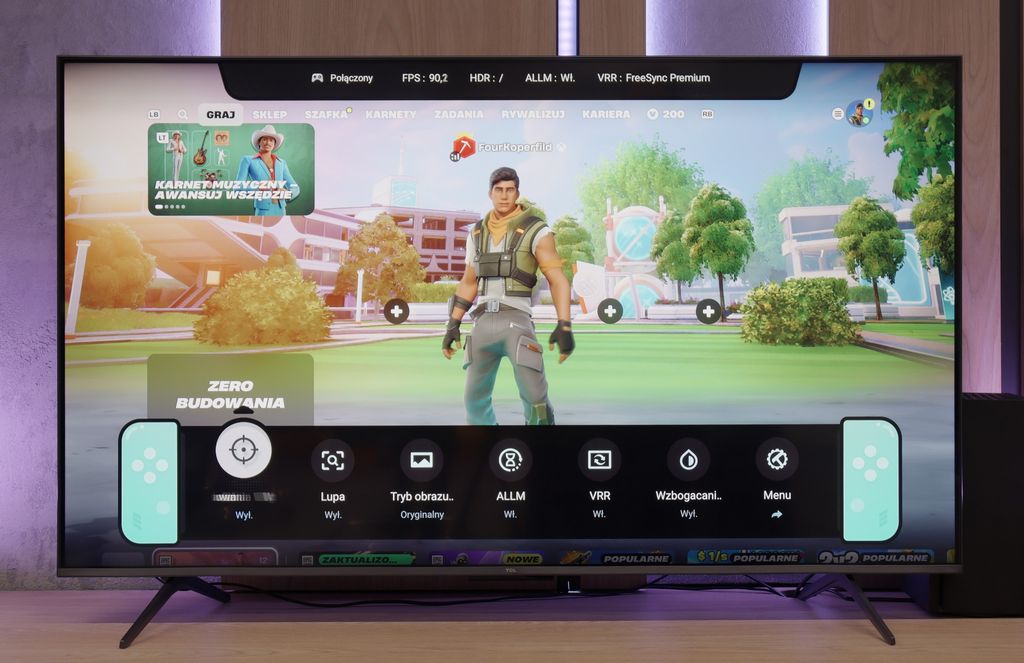
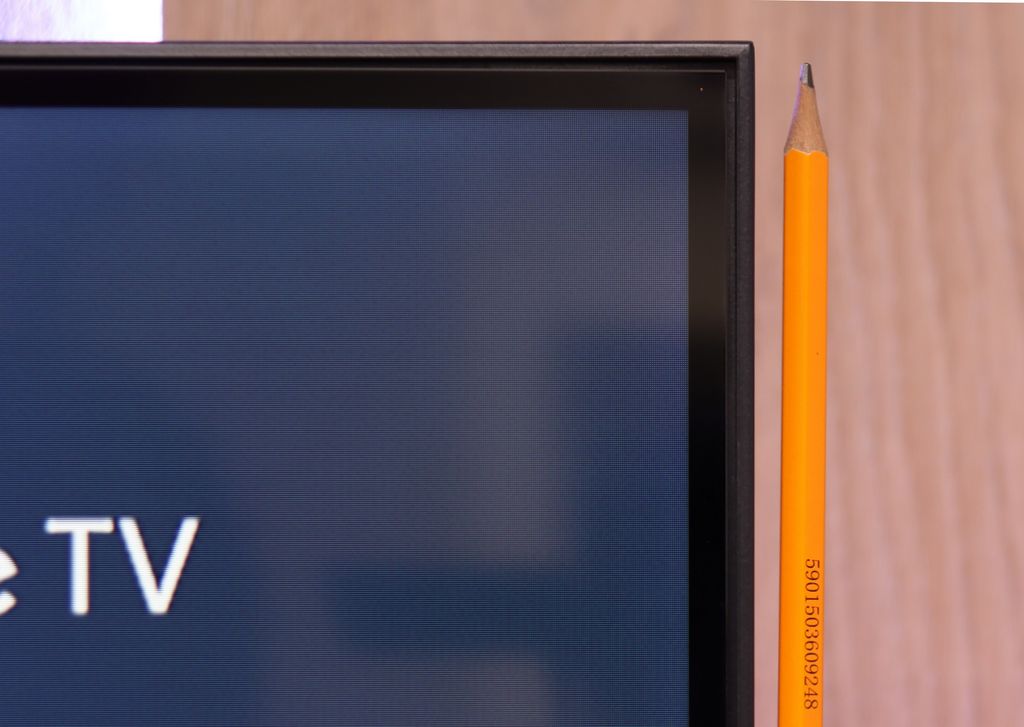
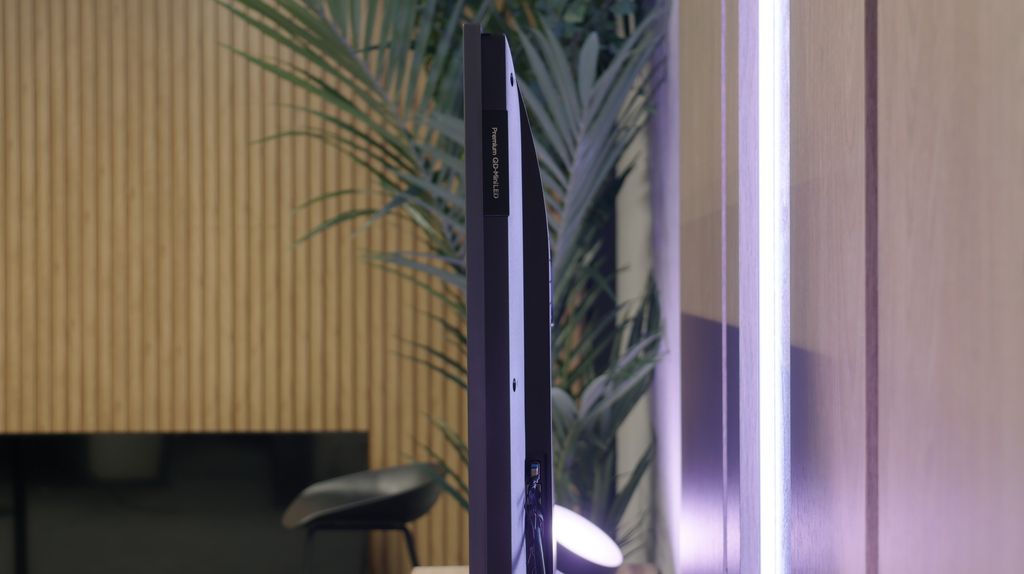
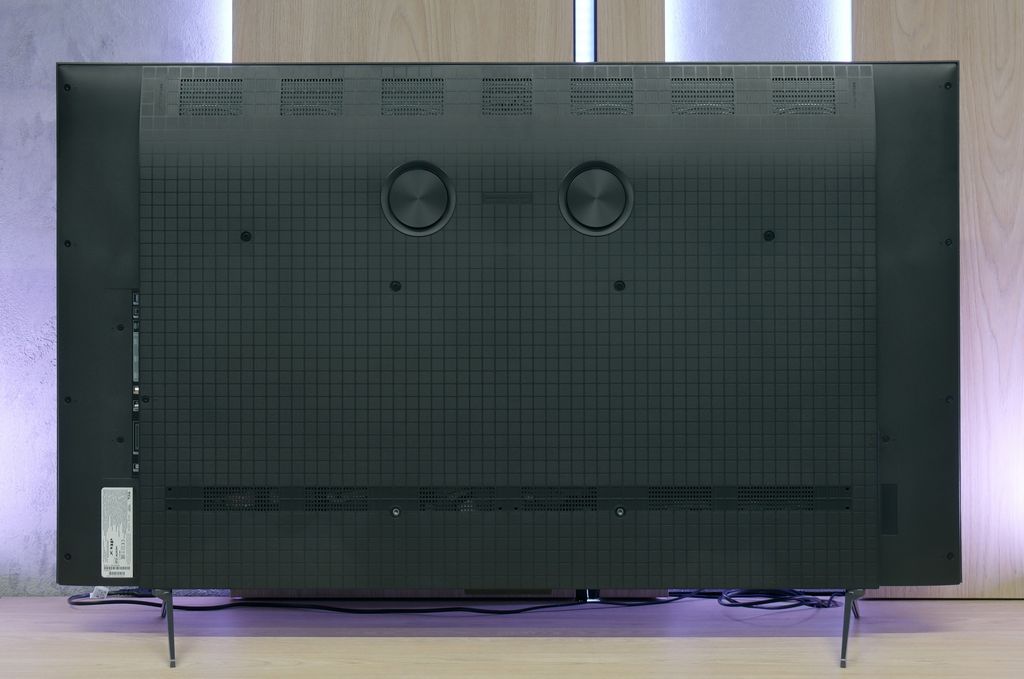
Contrast and black detail
6.7/10
7.3/10
Local dimming function: Yes, number of zones: 100 (10 x 10)
Local dimming function: Yes, number of zones: 180 (10 x 18)
Contrast:

Result
37,350:1

Result
8,850:1

Result
20,350:1

Result
4,300:1

Result
3,800:1

Result
114,000:1

Result
17,300:1

Result
16,200:1

Result
9,900:1

Result
4,850:1
Halo effect and black detail visibility:

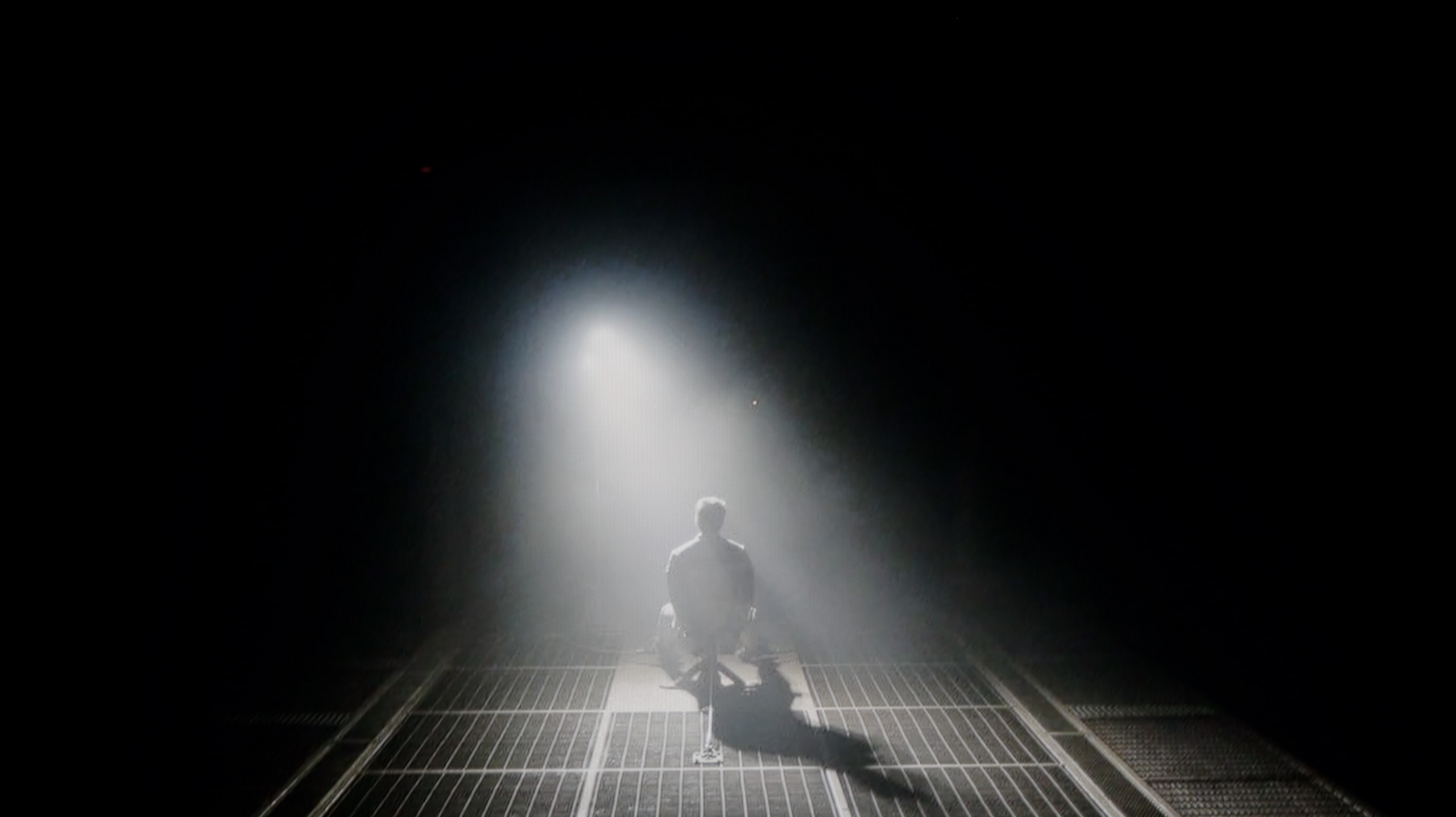
The Samsung Q80D television is equipped with a VA panel, which immediately affects the difference in contrast and black reproduction compared to IPS panels. VA panels offer significantly better contrast and deeper blacks, while IPS panels have better viewing angles but poorer contrast. For the 55" model, the television has 100 local dimming zones, and it should be noted that this number may vary depending on the screen size. Thanks to local dimming, blacks look good, but it's worth mentioning that the algorithm of this technology, combined with a limited number of zones, can sometimes go a bit "haywire." Bright objects can be dimmed to achieve better blacks. During testing in a scene from the film Oblivion, the lights merged into one blot, regardless of the dimming settings, showing the limitations of this technology. In the movie Sicario 2, large dimming zones were particularly noticeable, for example, with small helicopter lights, indicating how large the areas controlled by a single dimming zone are. Despite these imperfections, the local dimming technology still offers significantly better picture quality than televisions without this feature or with edge lighting. With the ability to completely turn off individual zones, the television can provide a noticeable boost in brightness in selected areas, which can give the image a cinematic effect, especially in dark rooms.
The TCL C6K is based on a VA panel, specifically an HVA produced by TCL CSOT, which already delivers a solid native contrast of 6000–7000:1 without the use of local dimming. However, the true strength of this model lies in its Mini-LED backlighting with the ability to dim individual zones. In the tested 55-inch version, we counted around 180 zones, and as the diagonal size increases, this number naturally grows. For a television in this price segment, the contrast is truly impressive. In simpler film scenes, such as segments from 'Oblivion', it looks fantastic, and shots completely filled with black make a great impression. Of course, due to the characteristics of Mini-LED technology, it's not always possible to avoid issues – in more challenging frames with many bright details, halo effects can appear, or some elements may be dimmed too strongly (regardless of local dimming settings). Nevertheless, the contrast can be regarded as a strong point of the C6K.
HDR effect quality
5.8/10
4.9/10
Luminance measurements in HDR:

Result
927 nit

Result
423 nit

Result
612 nit

Result
242 nit

Result
856 nit

Result
612 nit

Result
202 nit

Result
424 nit

Result
144 nit

Result
587 nit
Scene from the movie “Pan” (about 2800 nits)


Scene from the movie “Billy Lynn” (about 1100 nits)


Static HDR10


Dynamic: HDR10+
Dynamic: Dolby Vision


HDR luminance chart:
TCL C6K
Luminancja HDR
Luminance of RGB colors
Samsung QLED Q80D
Luminancja HDR
Luminance of RGB colors
In the context of HDR, the Samsung Q80D television, as expected, achieves very positive brightness results in the tested movie scenes, where the frame is filled with light, reaching values from 600 to 900 nits, allowing for a great juiciness of the image. Such results enable the user to feel the difference between HDR and SDR quality. Unfortunately, problems arise in situations where small light effects occur against a dark background. In such cases (e.g., the 4th test screen from the film Sicario 2), a noticeable drop in brightness is observed, which is caused by the large size of the dimming zones used here. This limitation, combined with the dimming algorithm, affects how the television handles small bright elements on a dark background. At that point, we may experience an undesired lack of brightness, and the HDR effect resembles that of SDR.
TCL C6K is a moderately bright television that can showcase its full capabilities in the best movie conditions – the maximum brightness is around 600 nits. In scenes with large, intense light sources, the HDR effect can be truly satisfying, providing a sense of cinematic sparkle. However, it's important to remember that with local dimming management, there are situations where some elements become dimmed, and sometimes even barely visible. It is clear that there is a lack of proper optimization of the algorithms, although looking at the technical parameters in this price range, the build quality performs very well.
Factory color reproduction
6.8/10
5/10


Factory Mode
After calibration


Factory Mode
After calibration
In "Filmmaker" mode, which is the best choice right out of the box, the Samsung Q80D television shows solid colour reproduction. For SDR content, a noticeable drop at the start of the gamma curve suggests that details in dark scenes may be less clear, affecting the overall viewing experience. Regarding white balance in SDR content, while generally correct, significant drops in blue at screen coverage above 70% can result in less natural shades in both bright and dark scenes. Users may notice that some blue elements in the image may appear less vibrant, and the overall colour will have a warmer hue.
In HDR content, the EOTF curve being above the reference line for most of the time indicates that the television may struggle to accurately reproduce brightness and details in the brighter parts of the image, which can be detrimental for the viewer. It is also worth noting the significant drop at the start of this chart, indicating that the television has difficulty reproducing brightness in the darker parts of the image, as seen in the contrast and black test, where several scenes were unable to show the full capabilities of the television’s brightness. In terms of its white balance, the initially good performance on the graph is promising, but the steep decline in red, coupled with a significant increase in blue, can lead to inaccuracies in reproducing some skin tones and other key colours. This phenomenon may be noticeable to viewers in scenes where colour details are crucial.
This year's TCL televisions have introduced the Filmmaker mode, and it must be said that it is definitely the best choice right out of the box. This is the mode we recommend for everyday viewing of movies and series. Unfortunately, as is often the case, the best does not mean perfect. In the case of SDR content, the image was too warm, as the red was quite prominent in the white balance. On the other hand, with HDR content, we had the opposite impression – the image became cooler than it should have been, due to an excess of blue. There is also the brightness characteristic, which at times led to overexposure. In practice, these issues combined resulted in quite noticeable errors in colour tests, which are hard to accept in a mode advertised as “by the creators”.
Color reproduction after calibration
8.1/10
7.5/10



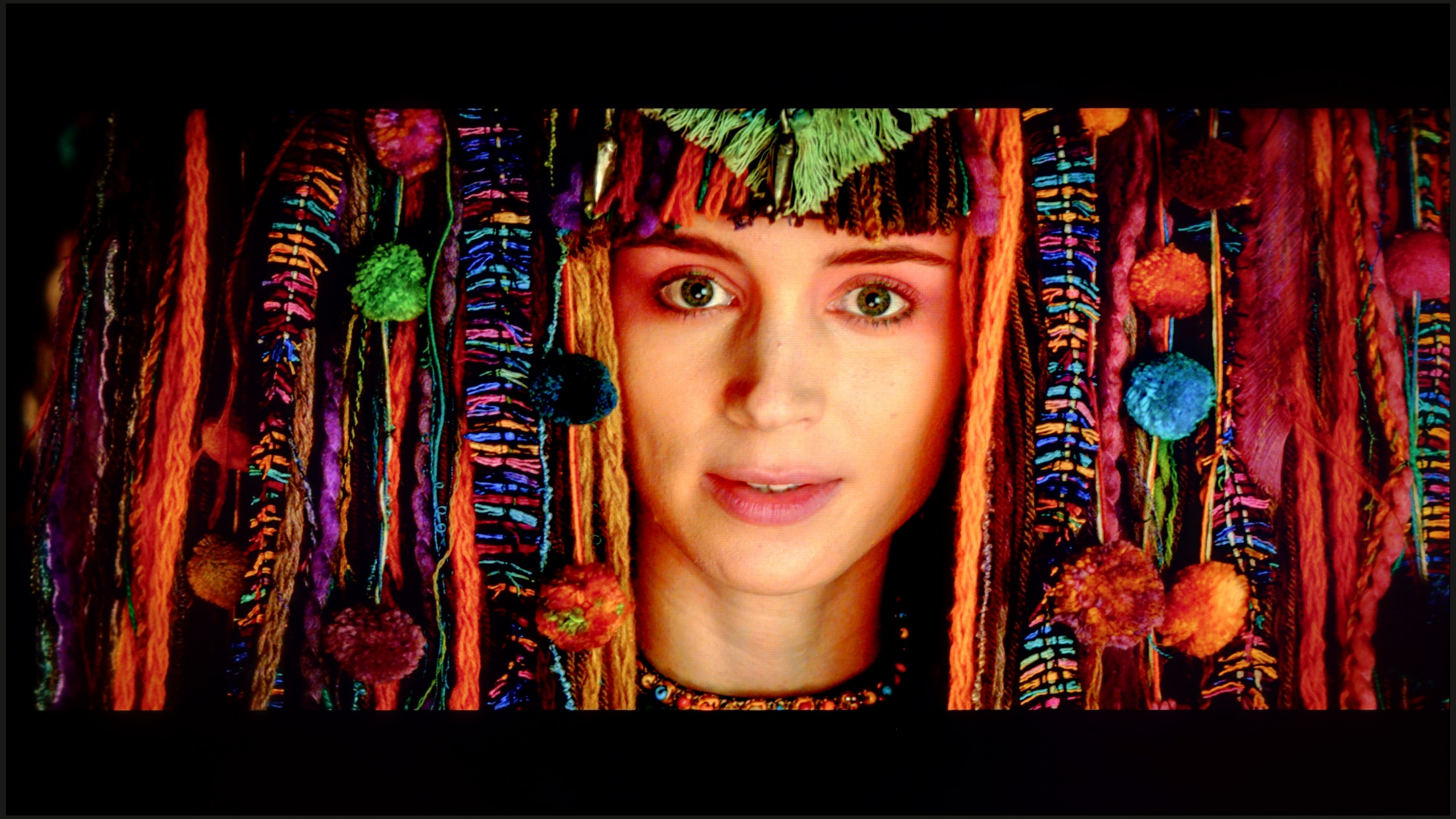
The movie mode after calibration looks significantly better than the one you see right out of the box. Samsung offers an advanced range of calibration tools in its televisions. Among them are 2- and 20-point greyscale adjustment and CMS (Color Management System). Both in HDR and SDR mode, white balance has improved significantly, although there are slight errors at the end of the graph for HDR content. Contrast has also been greatly improved, and the gamma curve responsible for SDR shows better results. However, when it comes to HDR, the EOTF curve on the television appears to be at an ideal level at first glance. However, when we dig a bit deeper and enable the EOTF graph while watching films, we may notice that all the lines of the curve are above the reference line. You could even say that the television is "cheating" when playing film material. Such a situation, where the EOTF curve is above the reference line, causes the screen – although it may appear brighter, which some users might find appealing – to lose detail in the darker parts of the image. In practice, this means that in scenes with a lot of shadows or dark elements, the television is unable to accurately render the details that should be visible.
Thanks to the white balance adjustment, we were able to significantly reduce the C6K's tendency to distort colours, which resulted in a very good end result. After calibration, we won't observe the effect of excessive warming of scenes in SDR or overly cooling the image in HDR. However, it is worth taking a closer look at the brightness characteristics. In SDR content, it's hard to have major objections – the picture looks really good, especially in older movies, TV shows, or material from YouTube. It performs significantly worse with HDR content. An analysis of the EOTF curve suggests that everything is fine, but in practice (EOTF in movies), the limitations of the construction become apparent. The television tends to excessively brighten the smallest fragments of the frame, and in other situations, it can overly dim the entire scene. The effect of calibration is therefore noticeable, and regarding colourimetry, the C6K has really gained a lot, but certain limitations resulting from local dimming and actually from its management by the C6K simply cannot be overlooked.
Smoothness of tonal transitions
8.8/10
9.5/10

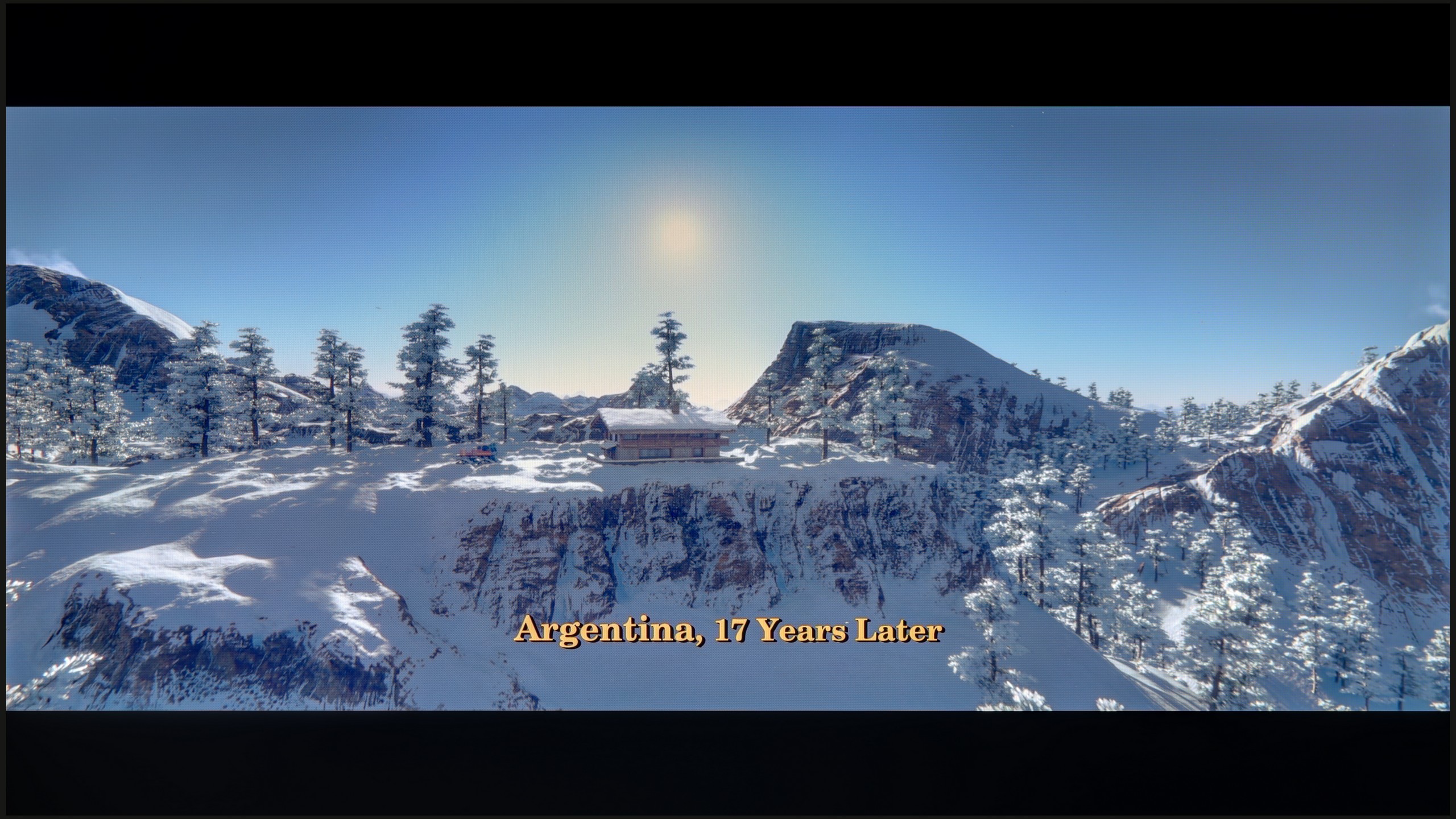

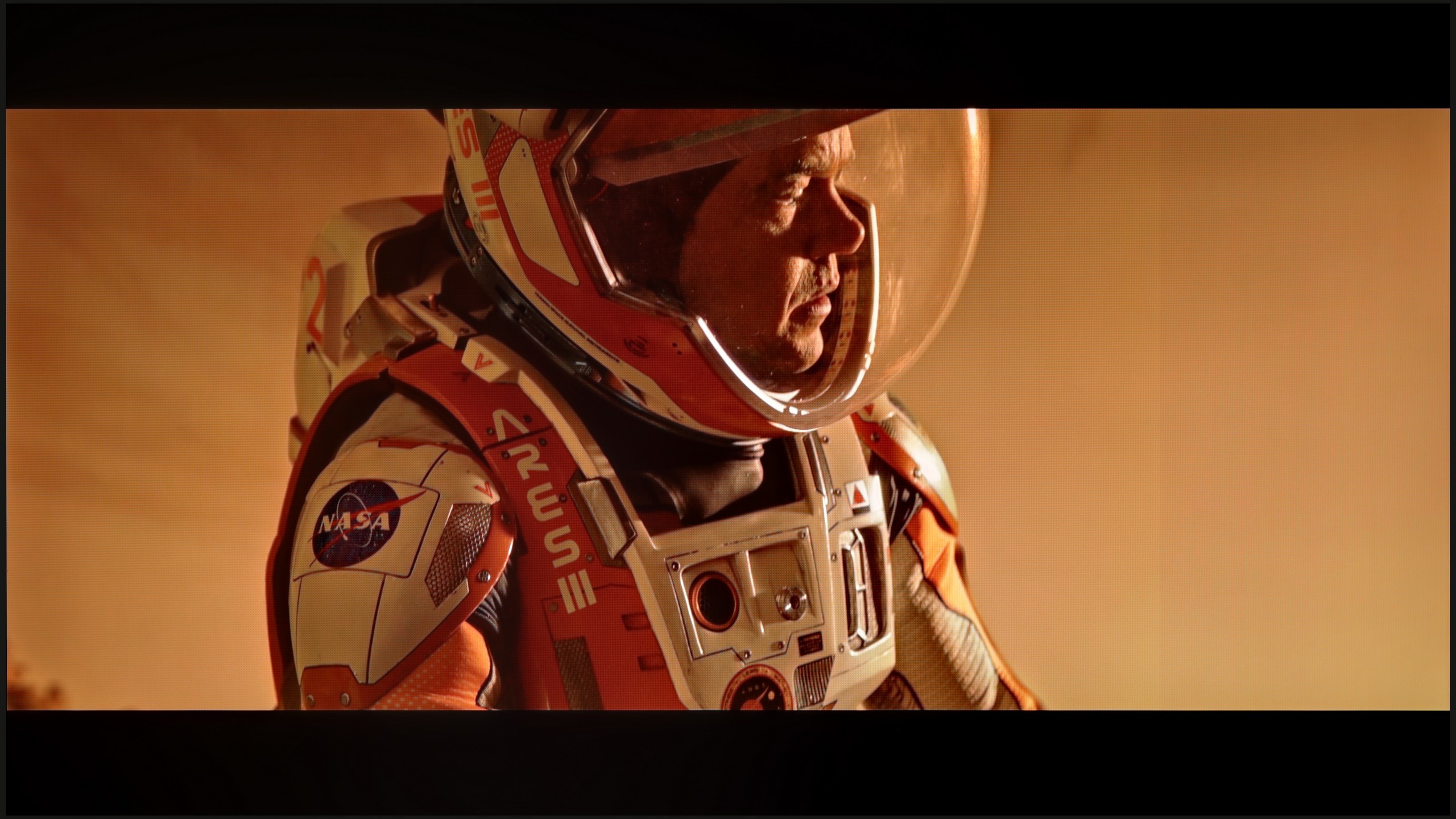

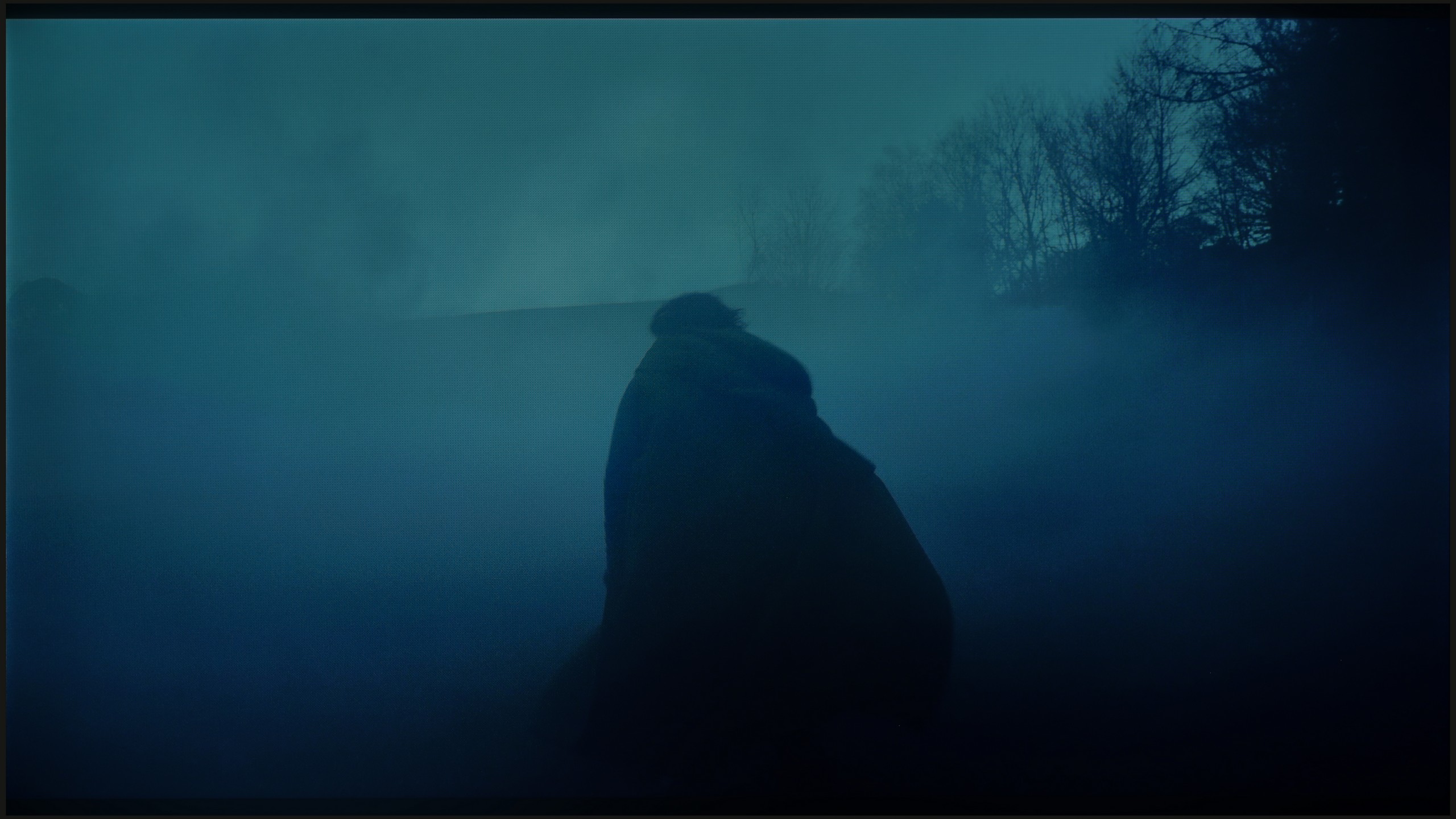






The tonal gradation on the Samsung Q80D television is excellent and can be considered one of its strong points. Even in the most demanding scenes from the films we tested, it performs superbly. Any potential issues with smoothing transitions in colours are minimal and subtle. The average viewer is unlikely to notice them, which translates to an overall positive visual experience in everyday use.
The transitions between colours in the C6K are very smooth, and it’s hard to nitpick any banding. The image looks natural, and any minor imperfections can only be noticed on bright test patterns – and only with really careful viewing. In everyday use, the effect is simply fantastic, and it’s safe to say that in this category, the C6K performs outstandingly.
Image scaling and smoothness of tonal transitions
7/10
5/10
Smooth transition function

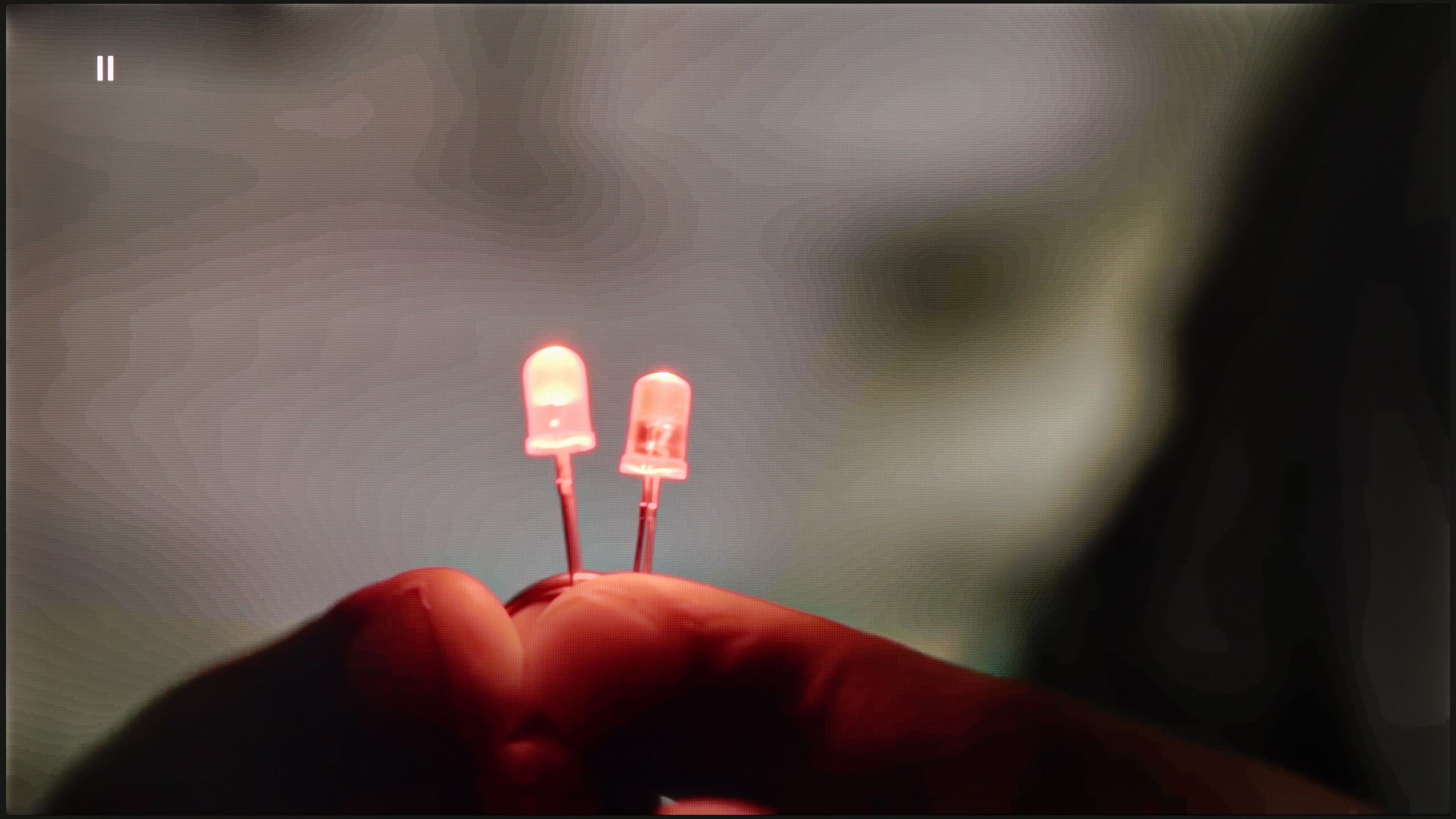
Image without overscan on the SD signal


Samsung Q80D performs very well with low-quality materials. The noise reduction works on the principle of gentle gradation, making it very effective in smoothing out unwanted image disturbances. Unfortunately, this same effectiveness also causes it to blur elements that shouldn't be smoothed, such as film grain. For those who prioritise a plastic, smooth image, this can be seen as a significant advantage, especially with lower-quality content.
In terms of image scaling, Samsung Q80D stands out positively in this aspect, significantly enhancing the viewing comfort. The TV handles the conversion of lower-resolution materials, improving their quality and details. For example, in the attached image featuring a model, there are no visible artefacts or excessive fraying of branches, which demonstrates advanced image processing technology.
TCL C6K performs quite well in terms of upscaling. Lower quality materials appear acceptable, and the absence of overscan issues means the image is displayed in full, without cropping. However, one cannot expect miracles – very low quality content won't come to life here, as the image processor has its limitations. On thin lines or details, there is characteristic tearing visible, which indicates a lack of advanced image enhancement algorithms. It is also a shame that the C6K lacks the function of smoothing tonal transitions – in older films or video materials, colour banding can be noticeable and may be distracting during longer viewing sessions.
Blur and motion smoothness
7.3/10
7.3/10

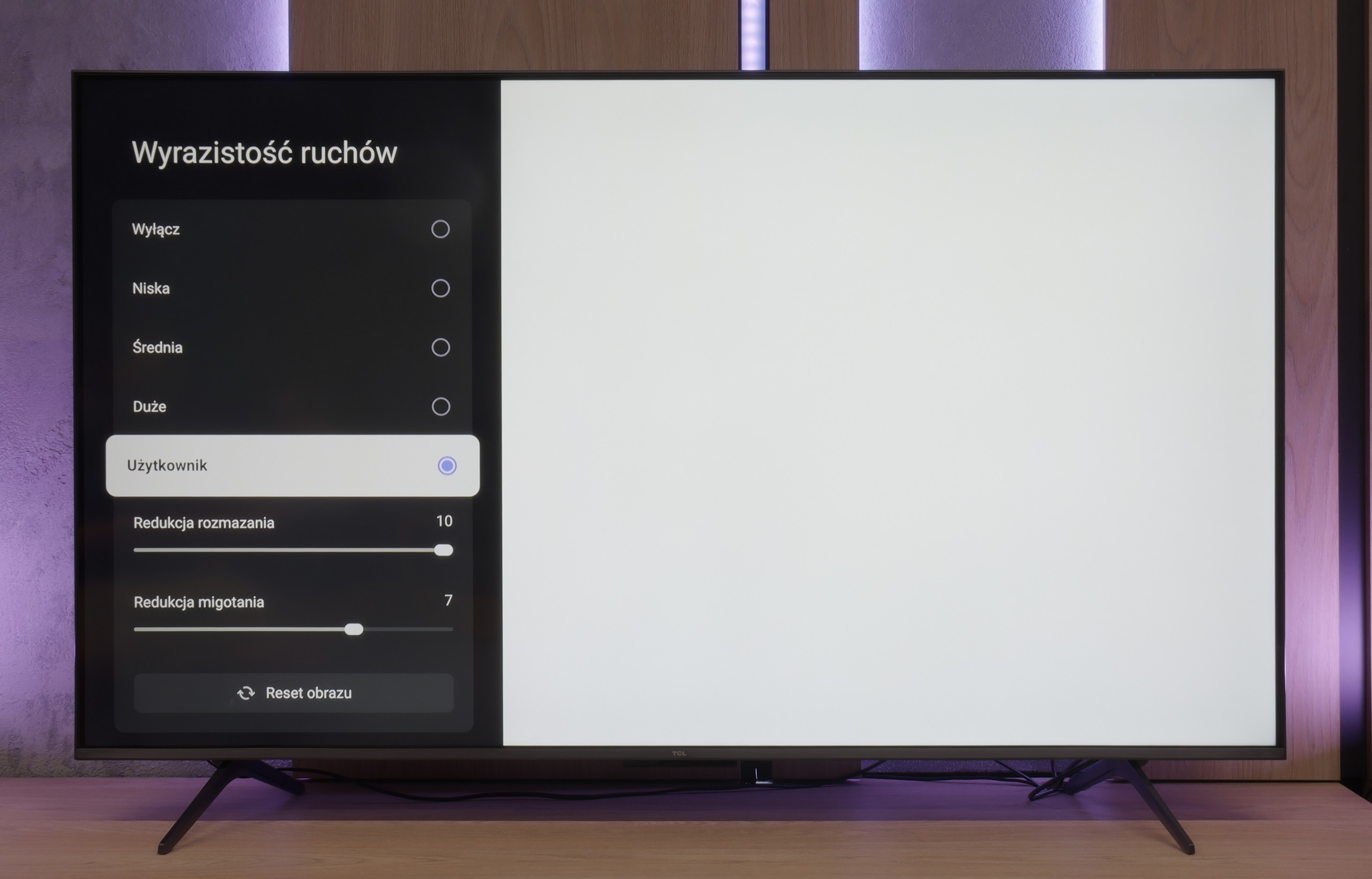
Blur (native resolution, maximum refresh rate):




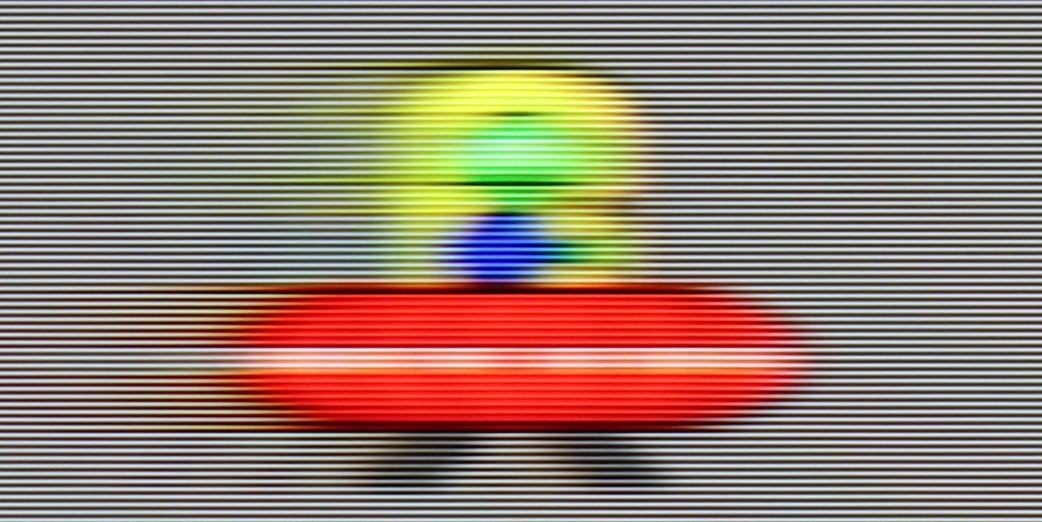
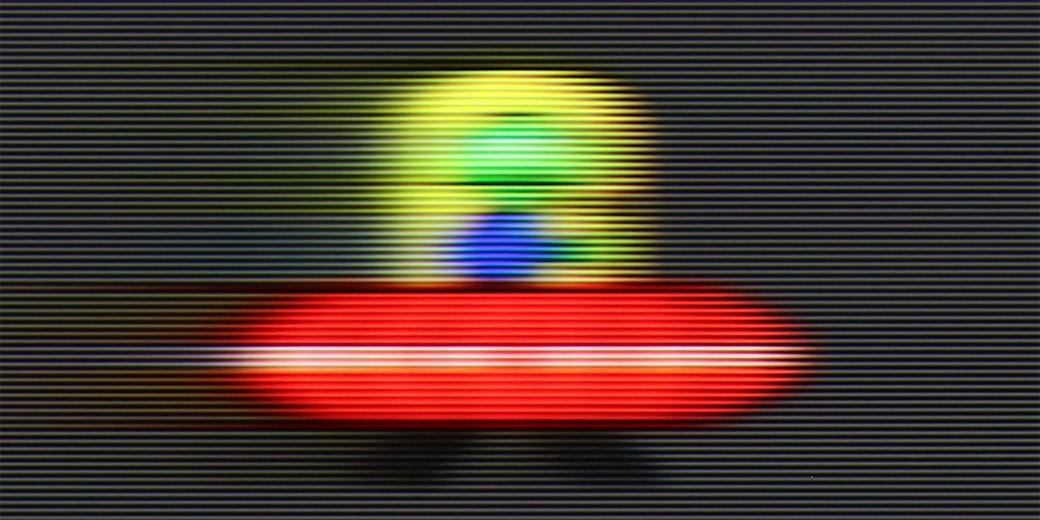
Blur (BFI function enabled):
Image flickers in this mode





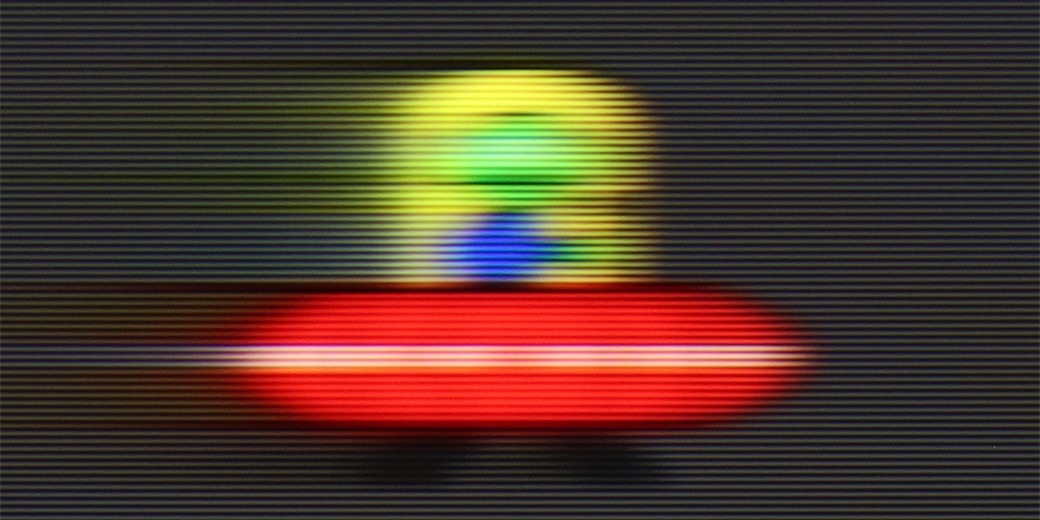
The Samsung Q80D television stands out very positively in terms of motion fluidity and minimizing blur, mainly due to the 120Hz panel and above-average panel response time. Users have two options for adjusting fluidity: "Motion Smoothing," which allows for adjustments in a 10-step scale, and "Blur Reduction," particularly effective at higher refresh rates, improving the sharpness of fast-moving objects. In the UFO test, there is no blurring behind the moving object, and the image is not cloned forward, indicating the absence of an overshoot effect.
TCL C6K uses a 144 Hz panel, which is a significant advantage in this price range. It's an important step forward in comparison to the previous model C655 PRO, which only offered 60 Hz in 4K. The difference is especially noticeable when watching sports or playing games – the ball, players, or fast action in the game are displayed more clearly and without losing detail. An interesting fact is the panel's ability to operate at 240 Hz, which the manufacturer doesn't mention in official materials. We will return to this topic when discussing the PC gaming mode.
TCL has also added a feature for movie watchers: "Motion Clarity," which allows users to adjust the image according to their preferences with two simple sliders. You can either keep the visible film frame or opt for a very smooth, almost theatrical effect. This way, everyone can find settings that match their taste.
Console compatibility and gaming features
9.5/10
9.8/10
- ALLM
- VRR
- VRR range48 - 120Hz48 - 240Hz
- Dolby Vision Game Mode
- Correct implementation of HGIG
- 1080p@120Hz
- 1440p@120Hz
- 4K@120Hz
- Game bar

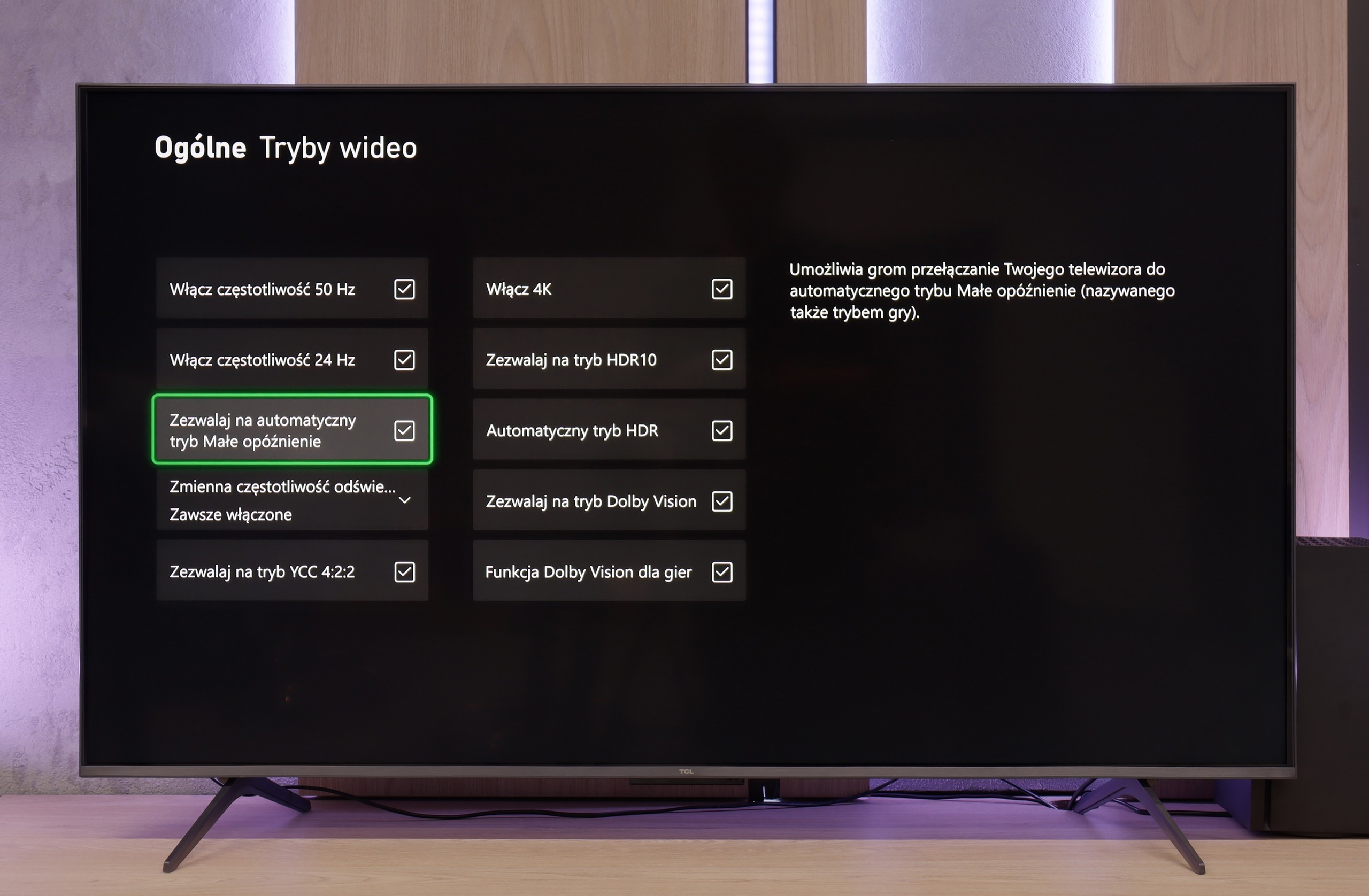

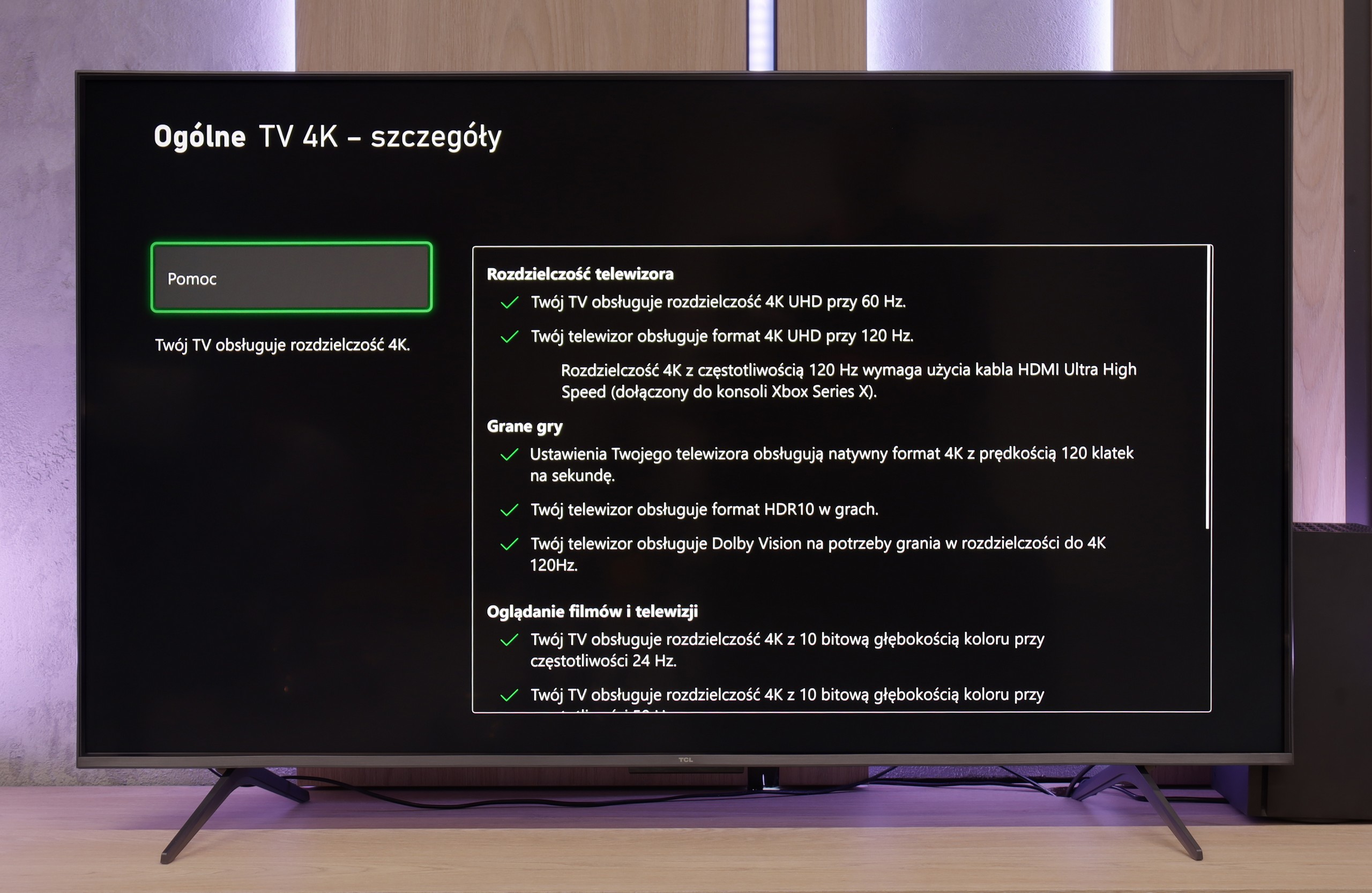

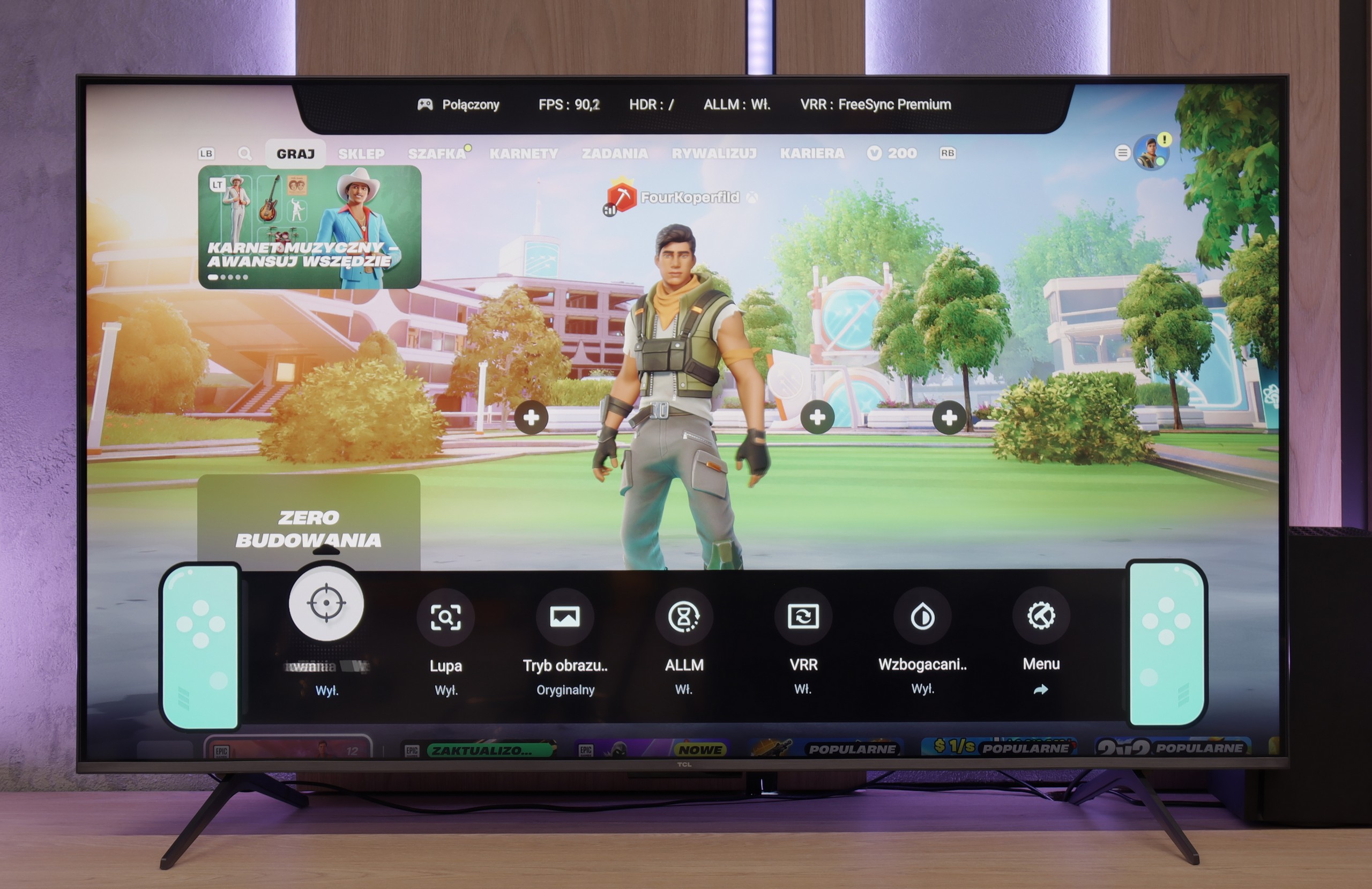


The Samsung Q80D TV is a real gem for gamers. It is equipped with four HDMI 2.1 ports, which is a rarity, especially in this price range. This allows users to enjoy features such as ALLM (Auto Low Latency Mode), VRR (Variable Refresh Rate), and 120Hz at 4K resolution. These features ensure smoothness and responsiveness of the image, which is a key aspect during dynamic gameplay. The TV also supports HGIG (HDR Gaming Interest Group), enabling optimal HDR content display in games. Additionally, it comes with a Game Bar, providing quick access to gaming settings. Users with Nvidia graphics cards will also be pleased with the implementation of G-Sync. This feature eliminates stuttering and screen tearing. The only downside is the lack of support for Dolby Vision, which may be disappointing for users looking for that HDR format. It's also worth mentioning that since 2022, thanks to the collaboration with Microsoft, Samsung TVs offer the Xbox Game Pass app, allowing for cloud gaming. This is an added bonus for gamers who want to take advantage of a wide library of games without needing a console.
The TCL C6K is a television that can confidently be called equipment designed for gamers. We have 4K at 144 Hz, VRR support, an automatic gaming mode (ALLM), and Dolby Vision Gaming. On top of that, there's a practical Game Bar, which is a panel with the most important settings handy – useful when we want to quickly change something during gameplay (e.g. screen ratio: Yes, you can!). Notably, it has a wide range of VRR, reaching up to 240 Hz. However, this option is mainly for PC gamers who drop below the native 4K resolution. In that case, the television can spread its wings and show additional smoothness, especially in fast e-sport titles. For consoles, we stick with the classic limit of 120 Hz, but the possibilities are still quite broad. The only slight drawback is some minor motion blur that can occasionally be seen in dynamic scenes. Other than that, the C6K offers everything gamers expect from a television.
Input lag
9.8/10
9.7/10
SDR
HDR
Dolby Vision
What more can I say, the input lag at this level is simply outstanding. It's hard to achieve a better result that will satisfy gamers! The television performed excellently at every tested resolution and refresh rate, both in SDR and HDR.
In terms of input lag, the TCL C6K performs excellently. With 120 Hz content, the delay is around 10 ms, and at times even less. This is at a level where the response is practically instantaneous, and it’s hard to find any complaints. For 60 Hz materials, the result is around 18 ms – still a very good result, more than adequate for comfortable gaming.
Compatibility with PC
7.6/10
8.6/10

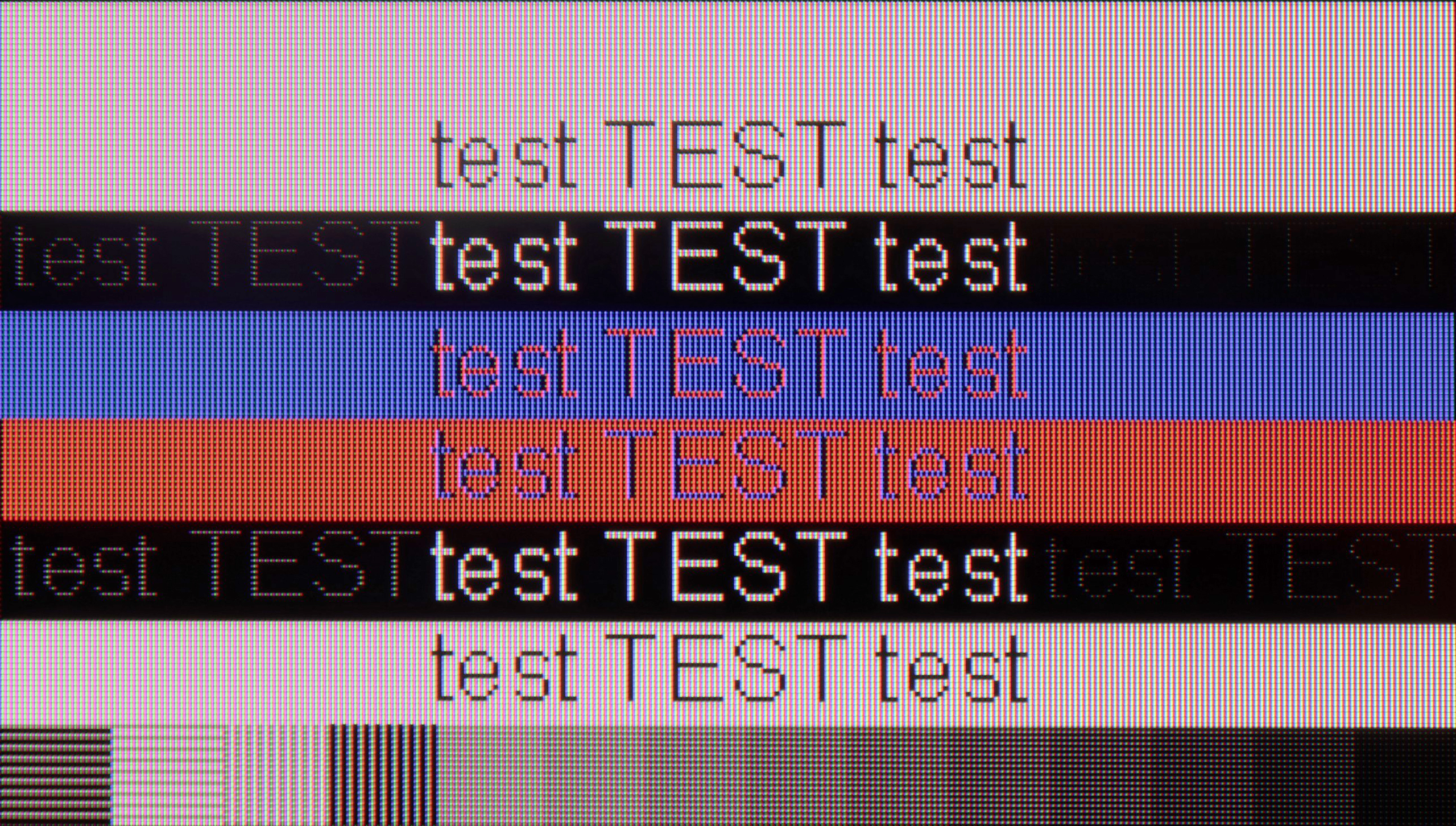
Samsung Q80D performs well as a computer monitor. With support for chroma 4:4:4 (only works in "Game" mode), text on the screen is sharp and readable, which is very important for those who want to work on such a TV with text documents or spreadsheets. One of the biggest advantages of this model is its exceptionally low input lag in “PC” mode, which is only 9 ms. This is a reference-level result that ensures smoothness and responsiveness, which is crucial for both gamers and video editing professionals. The only thing we can nitpick is that there is a certain issue with font rendering on dark backgrounds. When we zoom in on the tested font image, we notice that the horizontal lines are darker compared to the vertical ones. This means that the sub-pixels in the TV do not fully illuminate in this case. This could be due to an oversight by the manufacturer regarding the optimisation of the algorithm responsible for displaying thin lines, which affects the quality of details in text rendering on dark backgrounds. Nevertheless, Samsung Q80D is a very good choice as a PC monitor.
After connecting the TCL C6K to the computer, it performs excellently. At native resolution, we have 4K at 144 Hz, and if we lower the resolution, we can even achieve 240 Hz. Additionally, the TV works well with Nvidia and AMD cards – it supports both G-Sync and FreeSync. It’s also hard to fault for office work. Fonts are sharp and readable thanks to 4:4:4 chroma support, and any minor imperfections are so negligible that they're simply not noticeable in regular use.
Viewing angles
3/10
3/10
Samsung Q80D, equipped with a VA panel, unfortunately doesn't perform well with viewing angles. When we watch the screen at a 45-degree angle, there is a noticeable loss of brightness. The image becomes less sharp, which can be problematic if we plan to watch TV from different spots in the room. However, the VA panel has its advantages. When we look directly at the screen, black is deep and well-saturated. Moreover, even at an angle, dark colours retain their depth, which is rare for this type of panel.
In the TCL C6K, the viewing angles are typical for VA panels. Sitting directly in front, the picture looks very good, but any movement to the side results in a noticeable drop in colour saturation and brightness. The difference is particularly evident in colourful scenes – the hues become washed out, and the contrast loses its depth. Compared to IPS panels, this is clearly a weaker result, although the better black levels and higher native contrast remain a compensating factor – "you win some, you lose some".
TV efficiency during daytime
6/10
6.4/10

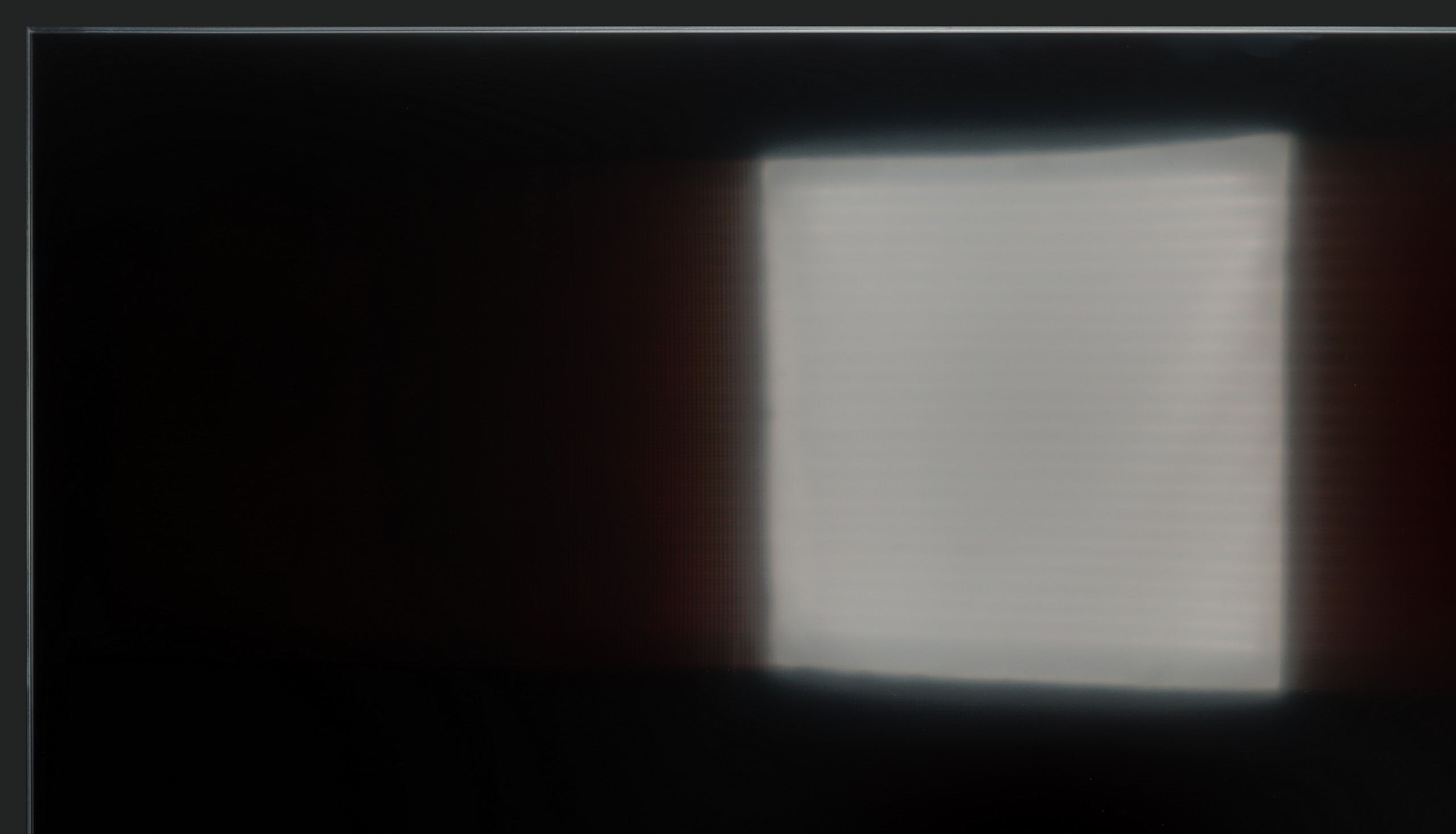


Matrix brightness
Average luminance SDR
TCL C6K: 532 cd/m2
Samsung QLED Q80D: 550 cd/m2
The Samsung Q80D television stands out with very good brightness, averaging 550 nits, which is an impressive result, especially as it maintains this brightness across the entire surface of the screen. As a result, the picture is sharp and clearly visible even in bright rooms, which is a big plus when watching television during the day. However, despite the matte coating on the panel, the television struggles somewhat with glare suppression. In bright lighting conditions, unwanted reflections can occur, which may disrupt viewing comfort. This is particularly noticeable when there are light sources in the room that directly hit the screen.
TCL C6K performs quite well in bright lighting conditions. The panel offers decent brightness – achieving around 550 nits in SDR content, which allows for comfortable viewing in a moderately lit lounge, even on days with strong light coming through the windows. This means that daytime viewing does not require complete darkening of the room. It's also worth noting that the screen coating does quite a good job of reducing reflections, so the TV doesn't turn into a "mirror" even with bright lighting. However, this is not on the level of top models with more advanced anti-reflective coatings – in very challenging conditions, such as large windows, reflections will be noticeable.
Details about the matrix
Subpixel Structure:

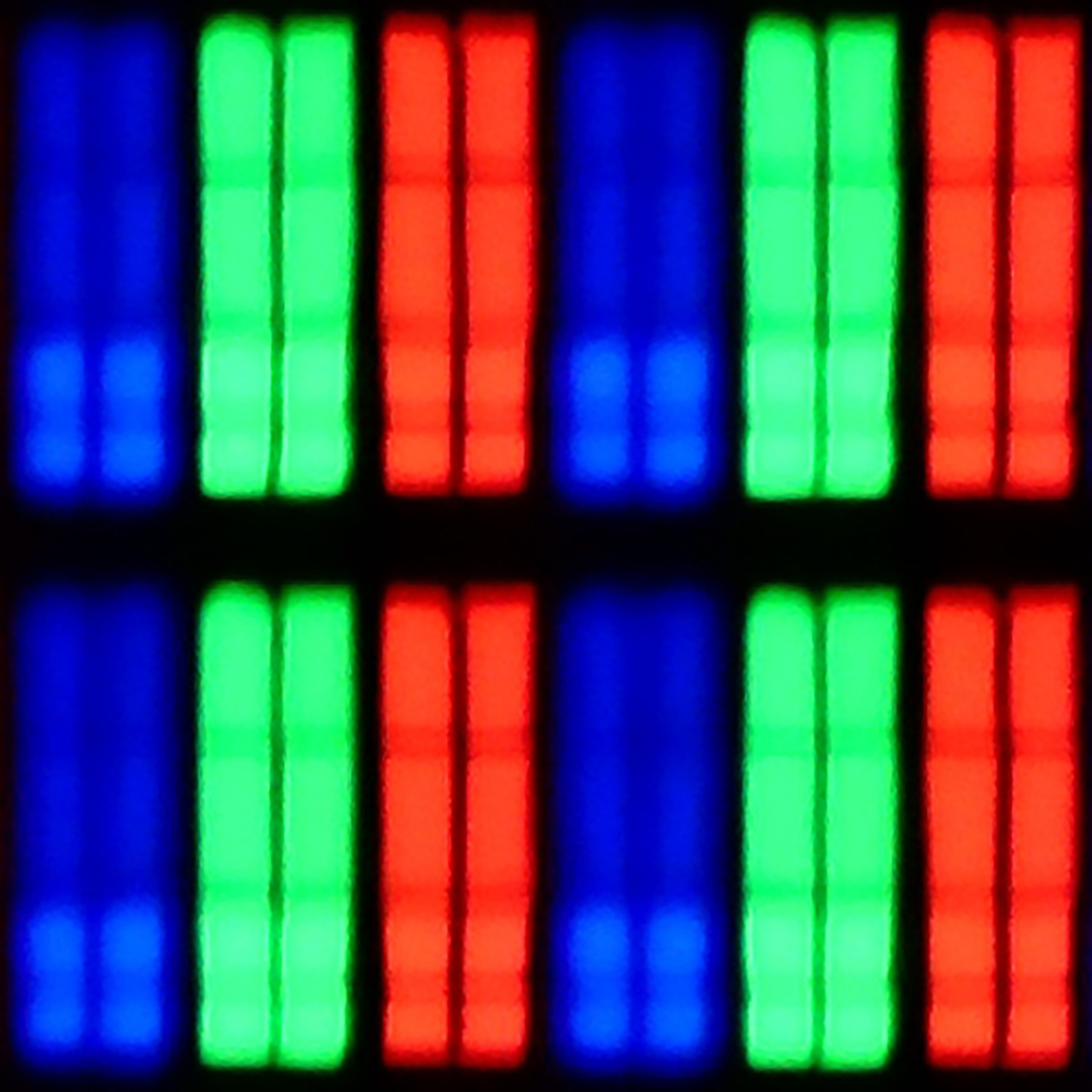
Panel uniformity:


Samsung QLED Q80D
TCL C6K
TV features
7.7/10
7/10
- HDMI inputs0 x HDMI 2.0, 4 x HDMI 2.1 48Gbps2 x HDMI 2.0, 2 x HDMI 2.1 48Gbps
- OutputsToslink (Optical audio), eARC (HDMI), ARC (HDMI)Toslink (Optical audio), eARC (HDMI), ARC (HDMI)
- Network InterfacesWi-Fi 2.4GHz, Wi-Fi 5GHz, Ethernet (LAN) 100MbpsWi-Fi 2.4GHz, Wi-Fi 5GHz, Ethernet (LAN) 100Mbps
- TV receptionDVB-T, DVB-T2, DVB-S, DVB-S2, DVB-CDVB-T, DVB-T2, DVB-S, DVB-S2, DVB-C
Classic features:
- Recording to USB (terrestrial TV)
- Recording programming
- Picture in Picture (PiP)
- RF remote control (no need to aim at the screen)
- Backlit remote control
- Teletext
- Audio only mode
- Possibility to connect Bluetooth headphones to the TV
- Possibility to simultaneously use Bluetooth headphones and the TV speaker
Smart features:
- AirPlay
- Screen mirroring (Windows Miracast)
- Wyszukiwanie głosowe
- Voice search in native language
- Ability to connect a keyboard and mouse


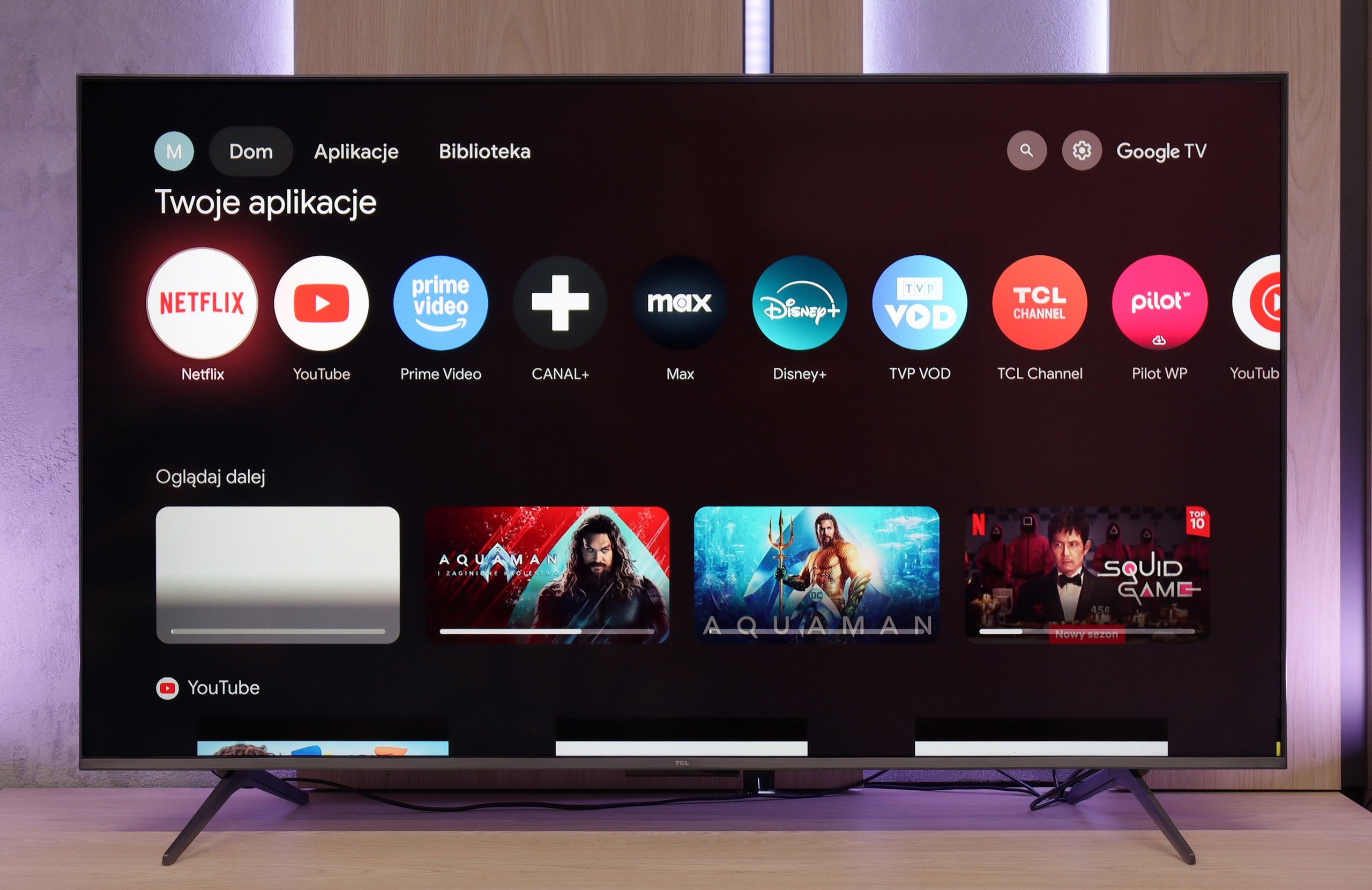
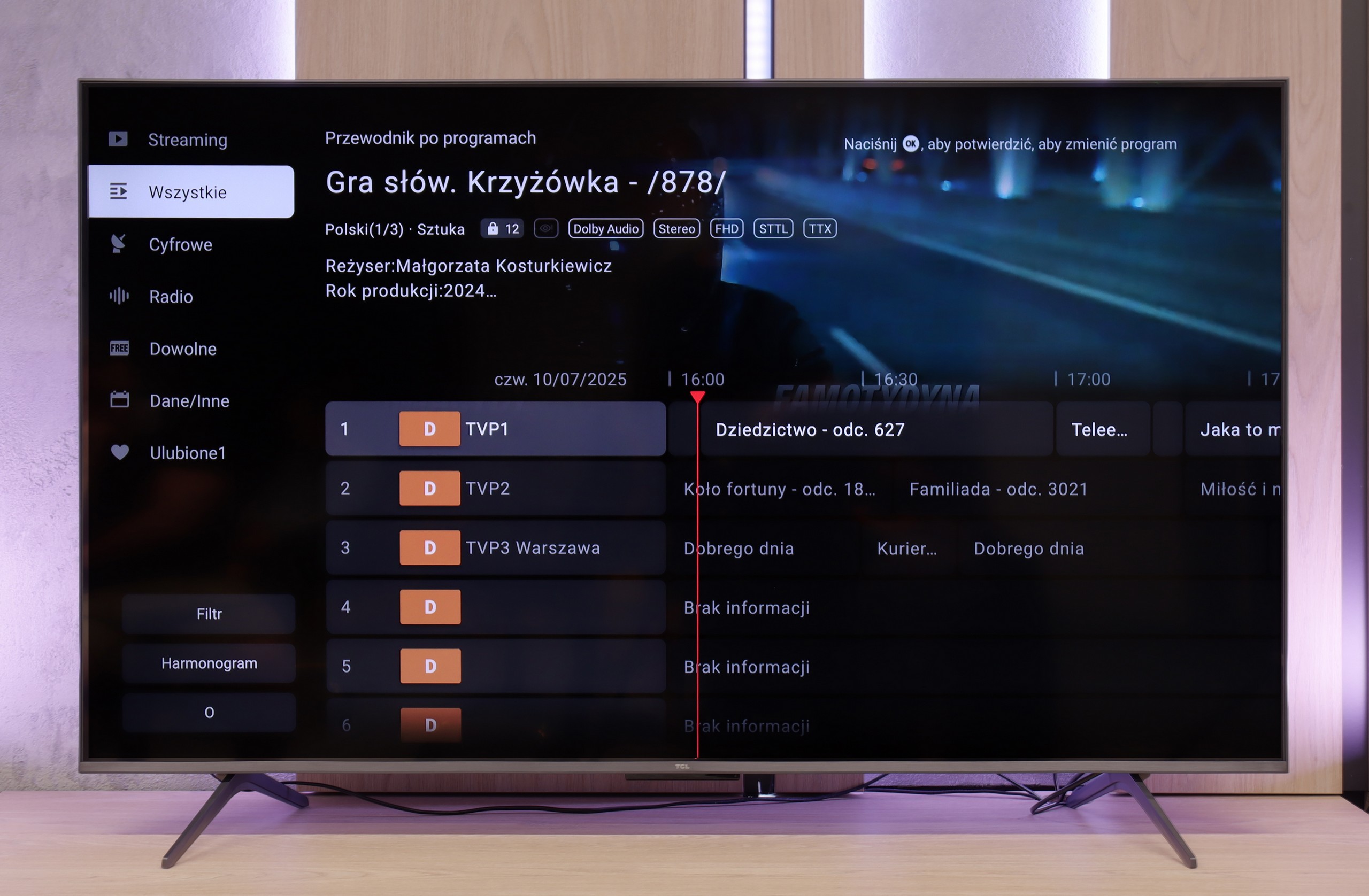
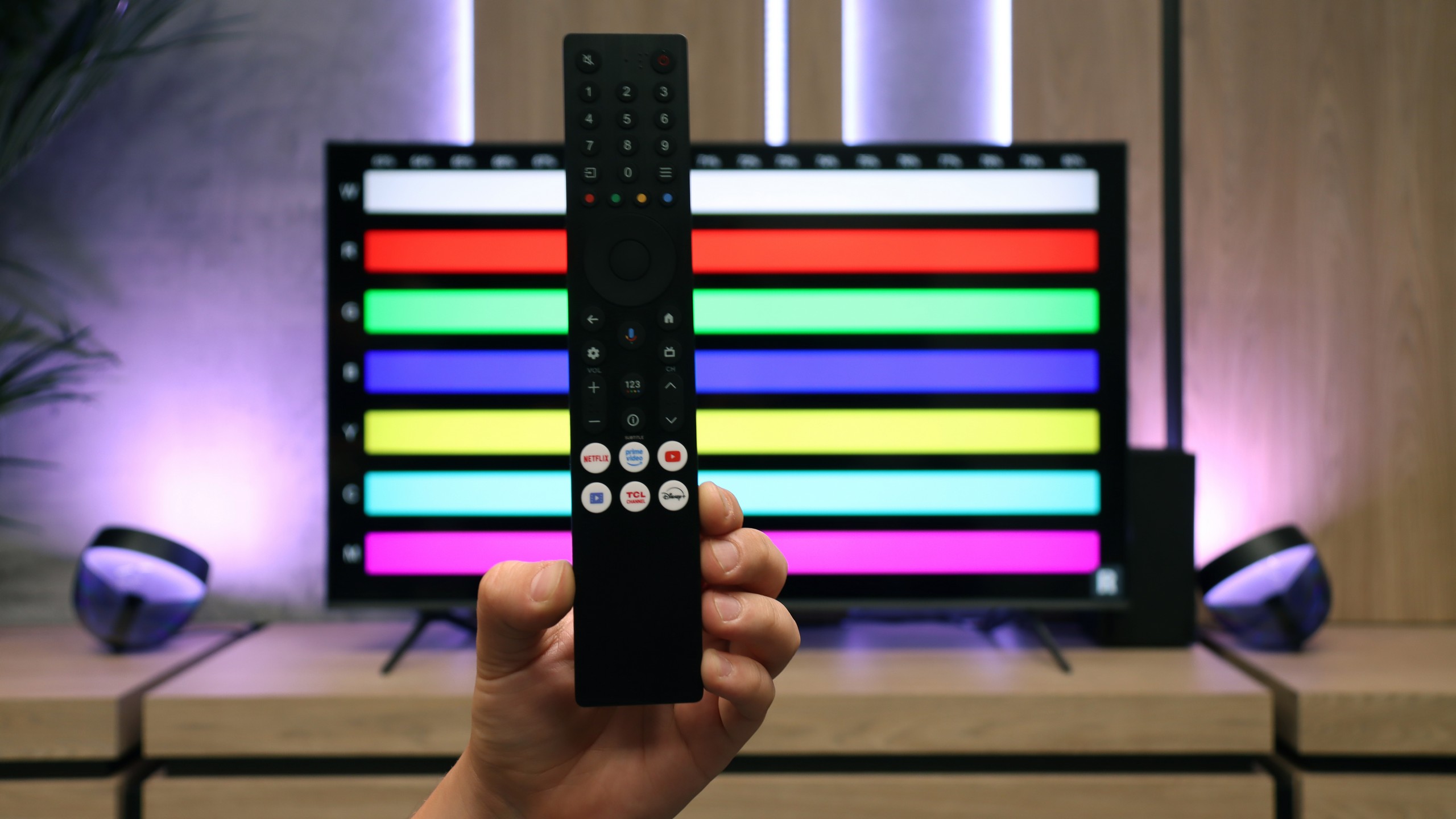
The Samsung Q80D television offers a range of features that significantly enhance user comfort. The Tizen system is an advanced platform that provides users with an intuitive and smooth experience. Thanks to its user-friendly interface, navigating through apps and settings is quick and easy. Tizen supports a rich set of applications, including popular streaming services, allowing access to a wide range of entertainment content without the need for additional devices, and a new feature for 2024 is support for the Polish language. It's also worth mentioning the solar remote control, which is not only eco-friendly but also convenient for everyday use. The solar cell remote can easily control other devices such as home theatres, set-top boxes (e.g., Canal+), or gaming consoles, which is quite a challenge for other manufacturers. Returning to the console, Samsung Q80D offers several features that gamers may appreciate. Firstly, the television supports VRR (Variable Refresh Rate) technology, which enables smoother game display, eliminating issues like tearing and stuttering. Additionally, with low input lag, reactions in games are quick and precise. The Samsung Q80D is also equipped with a Game Bar feature, which allows quick access to key gaming settings without the need to exit the game. From this interface, we can check and adjust parameters like VRR, input lag, frames per second (FPS), as well as screen ratios and sound settings. This means gamers can continuously optimise their experience by adjusting settings according to their current gaming needs. The television supports AirPlay, allowing easy content sharing from Apple devices, and enables connection to various Bluetooth devices such as mice or headphones, increasing its versatility. The only downside is the lack of USB recording support and the fact that the Q80D unfortunately does not support the DTS sound format. This means that if we have content encoded in this format, the device will not be able to properly play back the audio track. This could pose a problem for those using Blu-ray discs or media files that often utilise DTS to provide high-quality surround sound. To achieve complete audio experiences, it may be necessary to use an external player or soundbar that supports this format.
Multimedia Features: Google TV
The standout feature of the TCL C6K is undoubtedly the Google TV system. It gives the television its character and gives it an edge over many competitors. We have a full suite of services – from support for popular streaming apps, through screen mirroring support, to AirPlay, so iPhone users will feel right at home. Additionally, there's Google Assistant (now in the Gemini AI version), which not only answers questions but also efficiently carries out simple commands like changing channels or searching for content on VOD services. The system itself operates quite responsively, although it’s hard not to mention a certain drawback – the clumsy translations in the Polish menu can elicit a smile but sometimes require a moment of thought to decipher what’s really meant.
Classic Features
When it comes to classic television features, the TCL C6K is rather average. We won’t find USB recording or PiP mode, which may be disappointing for some. However, the manufacturer hasn’t forgotten the basics – teletext television and a clear EPG are available, which still hold significance for some users. In everyday use, support for external audio devices via Bluetooth comes in handy – a straightforward way to connect a speaker or headphones, which could be a practical solution for seniors. Beyond that, it’s hard to spot elements that would distinguish the C6K from its competitors – it’s simply a solid, but standard package of basic features.
Playing files from USB
9.1/10
8.9/10
Supported photo formats:
Maximum photo resolution:

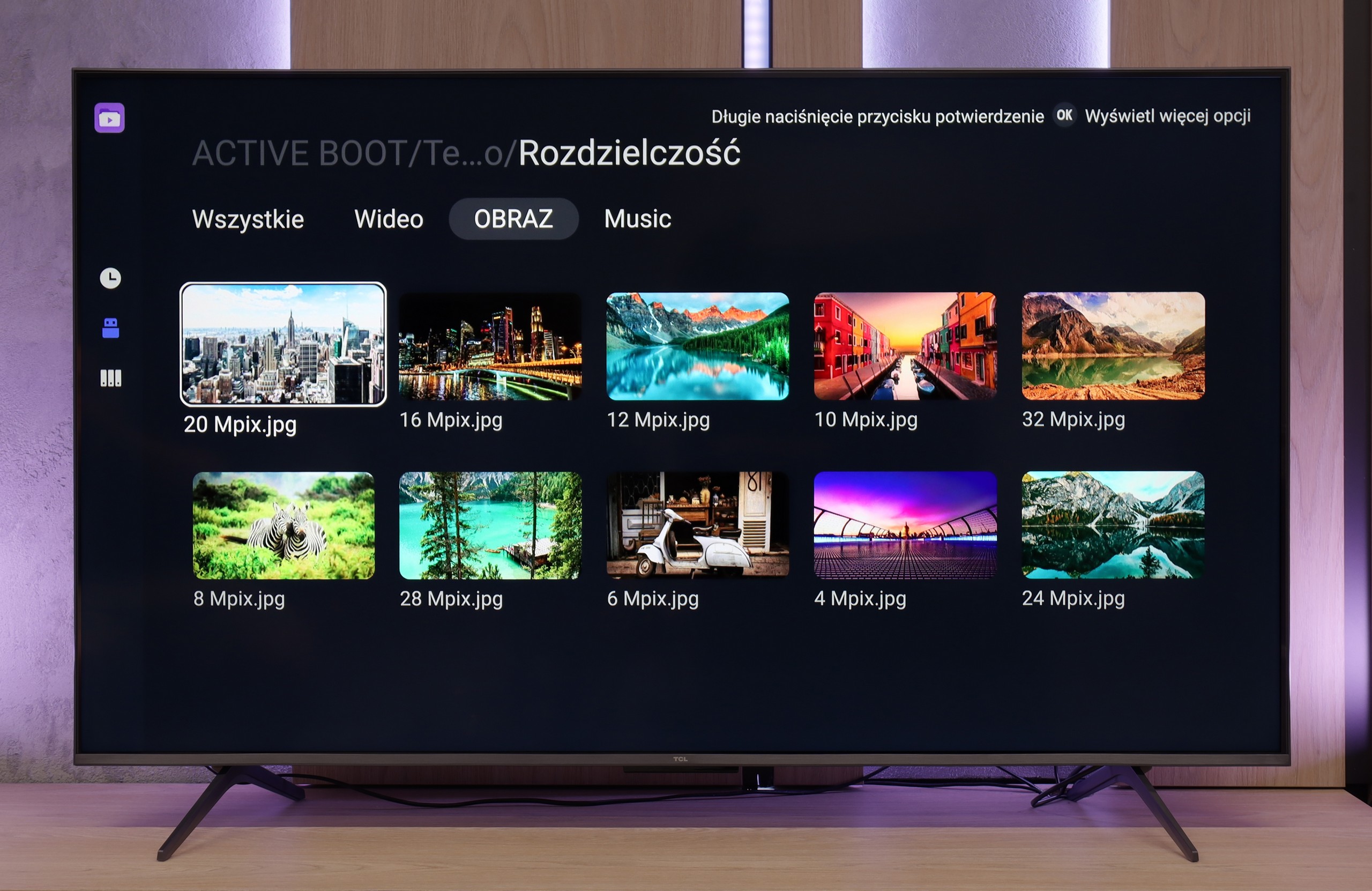
The built-in player in the Samsung Q80D television is definitely one of its strong points. It handles almost all video and audio files that we tested exceptionally well. The only exceptions are the Dolby Vision format, which is not surprising, and less common codecs. On the plus side, it supports Polish characters and offers the ability to customise font colours. On the downside, the TV struggles a bit with photo formats, as it only supports JPEG among the popular ones, while lacking support for formats like PNG or Apple HEIC.
The built-in media player in the TCL C6K performs really well – practically all popular file formats work without major issues. There are minor exceptions, particularly with less common codecs or unusual video file configurations, but in everyday use, this rarely becomes noticeable. The biggest plus, however, is that the television runs on Google TV, which offers complete freedom in choosing additional software. If someone encounters a file that the standard player can't handle, all they need to do is install an alternative – like VLC – and the problem disappears.
Apps
8.7/10
9.6/10














































Sound
6.6/10
6.5/10
- Subjective sound quality:6.6/106.5/10
- Dolby Digital Plus 7.1:
- Dolby True HD 7.1:
- Dolby Atmos in Dolby Digital Plus (JOC):
- Dolby Atmos in Dolby True HD:
- DTS:X in DTS-HD MA:
- DTS-HD Master Audio:
The Samsung Q80D television is equipped with a decent audio system with a power of 40W in a 2.2 configuration, providing quite good sound experiences. This system supports all popular Dolby codecs, allowing for the use of advanced audio formats during movie watching or gaming. However, it is worth noting one drawback: the television does not support DTS functionality. Nonetheless, the lack of this feature can be bypassed by connecting an external audio system, which can significantly improve sound quality and provide a more immersive audio experience. Additionally, Samsung offers a wide portfolio of soundbars that can be integrated with the television, as well as the Q-Symphony system, which allows for sound synchronization between the television and soundbar.
In terms of audio, the TCL C6K performs quite well. The manufacturer has been boasting about its collaboration with the Onkyo brand for several years, and it indeed reflects on the sound quality. The sound is pleasant, with clear mid-tones and fairly crisp highs, and overall, it gives the impression of being well-balanced. Of course, it won't replace a proper soundbar, especially regarding bass depth, but for built-in speakers in a TV from this price segment – it’s really quite good.


